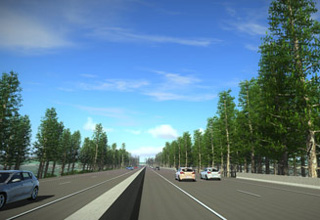Evolution of 3D design models in transportation (Source: Civil + Structural Engineer)
By Alan Esguerra
During the last several years, 3D modeling in the transportation industry has gained attention with many agencies, consultants, and contractors having different understandings of what information 3D models can provide. Contractors of past have viewed 3D models as solely a public involvement tool. Transportation consultants have considered 3D models as products only vertical engineers use for Building Information Models (BIM) and don’t have much use in the horizontal world. Transportation agencies have previously viewed 3D models as an extra cost and effort for a pretty picture or movie that is not geometrically accurate.
But these views are changing. Today’s 3D design models increasingly are viewed as important tools that offer a design-centered approach to visualize accurate information. These 3D models are now used to develop the design of transportation projects to help engineers and stakeholders make more informed decisions and deliver better projects. 3D design mitigates risk, reduces time in alternative design exploration, develops quantities faster, and, overall, 3D models convey the design intent in a mathematically accurate and digestible format.
Older, traditional design models were created after the design was complete, often by a graphic artist through interpretation from an engineer or designer. Continuously changing designs and decisions resulted in a significant investment in time and computing power to reproduce the changes in the visualization model. These models were only as realistic as the artist’s interpretation. Today’s 3D models are created with realistic effect directly by engineers. The design model visualization is a direct by-product of the engineer’s intended design calculations. The visualization is as accurate as the engineer’s construction intent.

